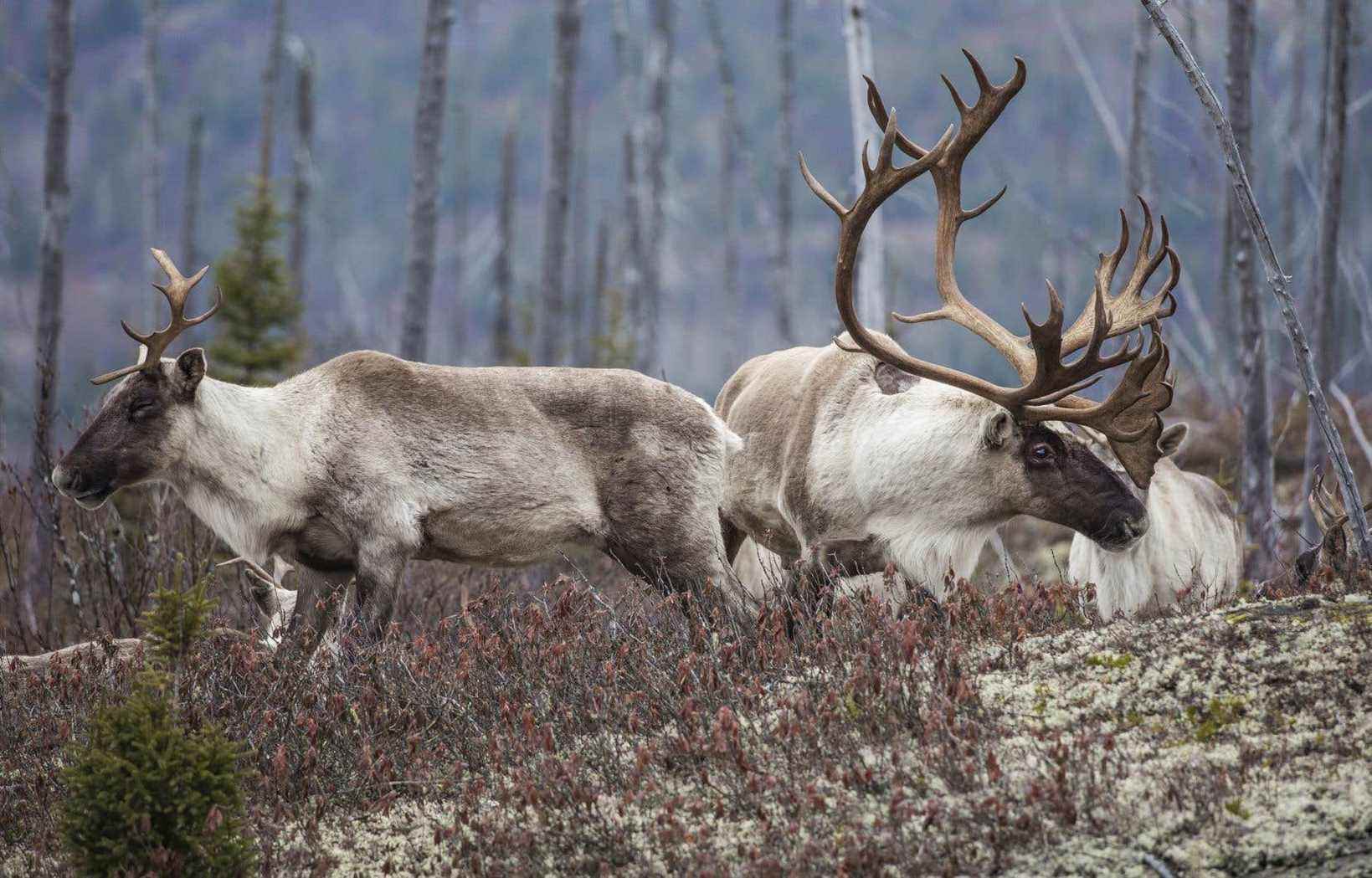After promising to present a “strategy” this year to curb the decline of the woodland caribou, the Legault government turned around and gave a mandate for regional consultations to an “independent commission”, which did not include any expert on the species. The government is thus trying to save time, according to organizations campaigning for the protection of this cervid whose habitat is increasingly threatened by the forest industry.
The Ministry of Forests, Wildlife and Parks (MFFP) confirmed Friday, in a press release, that the government of Quebec will not present this year a strategy to protect the various populations of woodland caribou in the province. No date is now mentioned by the ministry, which simply mentions a “strategy to come”.
Instead of a rescue plan for the species, the minister responsible for the MFFP, Pierre Dufour, has decided to set up an “independent commission” which will have to carry out, in the winter of 2022, “a series of regional public hearings ”in order to collect the opinions of the participants“ on two scenarios for the adapted management of caribou habitat ”. These scenarios were not presented in the press release released on Friday.
No biologist
The commission will be chaired by Nancy Gélinas, Dean of the Faculty of Forestry, Geography and Geomatics at Laval University. Ms. Gélinas is also a research professor in forest economics. She will be supported by two commissioners who have long worked as civil servants in the government of Quebec, mainly in areas related to the economy, administration and finance.
On reading the MFFP press release, we see that the commission does not include any biologist, no expert in forest ecosystems and no expert on woodland caribou, even though this species is being studied by several scientists in Quebec.
Their mandate is to conduct public consultations “in certain regions” where woodland or mountain caribou are found, namely Saguenay-Lac-Saint-Jean, Côte-Nord, Abitibi-Témiscamingue, Nord-du- Quebec and the Gaspé. All of these regions have a forestry industry. As for “citizens of other regions”, they will be able to “express themselves on the issue of caribou by submitting a brief”. A report and “recommendations” will then be sent to Minister Dufour.
Bad decision
Professor in the biology department of the University of Quebec in Rimouski and woodland caribou expert, Martin-Hugues St-Laurent considers that this new postponement of a plan to protect the species is very bad news. “The decline of the various populations is already well known and we already know what must be done to save the species in Quebec. But the government decided to buy time by postponing the implementation of a preservation strategy. All we will see, once we come up with the rescue measures, is that the decline will have continued. “
Same story with the Nature Quebec organization. “By further deferring his strategy to forest and mountain caribou, and by ordering an unnecessary commission, Minister Dufour is abandoning his role of protecting endangered wildlife species. It makes you wonder if its real strategy is not quite simply to order studies, reports and commissions while waiting for the last caribou to disappear, ”laments its director general, Alice-Anne Simard.
For the biologist Alain Branchaud, director general of the Société pour la nature et des parcs du Québec, the protection priorities have all been identified over the course of the various consultations in recent years: closure of forest roads, creation of protected areas, protection of mature forests, etc.
However, the Legault government decided instead to set aside several protected area projects that would have made it possible to increase the protection of habitats conducive to the survival of woodland caribou. Among these was a 310 km2 project put forward by the Ministry of the Environment and the Fight against Climate Change and designated as a “priority sector” for the caribou. There was also a series of four projects led in particular by the Innu and located in the Pipmuacan reservoir region, northeast of Lac-Saint-Jean.
Decline of the species
Meanwhile, the most recent inventories carried out by experts from the Ministry of Forests, Wildlife and Parks have shown that the situation continues to deteriorate for different populations.
For example, the aerial survey carried out over 28,000 km2 in the Pipmuacan sector (covering the north of Saguenay − Lac-Saint-Jean and a portion of the Côte-Nord), made it possible to assess the population at only 225 animals. “Certain sectors hardly have any more caribou, contrary to what was observed in 2012”, can one read in the report of the ministry, which specifies that “the disturbances of the habitat” are too important, but also that ” the population is in an extremely precarious state and its capacity for self-sufficiency is unlikely under current conditions ”.
In other sectors, including those of Manicouagan and the Middle North Shore, experts have counted a few dozen to a few hundred animals, often in lower numbers than previous inventories. The same goes for the number of calves, that is, young caribou, an indicator that allows us to assess a population’s “recruiting” capacity. Overall, the MFFP estimated that there were 6,000 to 8,500 woodland caribou in Quebec during the last report, in 2012. This figure will certainly be lower when the next report is published, warns Martin-Hugues St-Laurent.
Some populations are on the verge of extinction, after years of decline. This is the case for the last six caribou in the Val-d’Or region, which were placed in captivity in March 2020. Those from Charlevoix, which are not more than 25 individuals, will also all be placed in enclosures shortly. .
In the case of the Gaspé caribou, the MFFP plans to capture the pregnant females next winter, and not the 50 or so animals that make up the last caribou population living south of the St. Lawrence. The females will be transported in captivity to protect the fawns from predators. They could then be released after a few weeks, or stay longer in captivity, depending on the success of this operation.
